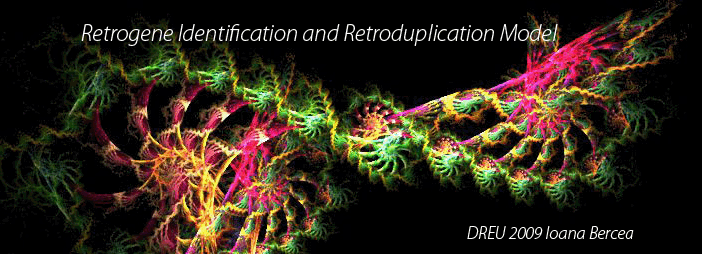 |
| Home » Journal |
PersonalMentorColleaguesProject Journal Week 10 Week 9 Week 8 Week 7 Week 6 Week 5 Week 4 Week 3 Week 2 Week 1 |
Week 10(August 18- August 25)This week, I'm all alone in the lab. The campus is getting filled with first years and the cadets are marching all over the place. Everything is very impressive and a little bit nostalgic, since I remember my own first year. In any case, I'm trying to finish up some of the problems of the project before I leave for Chicago. Two major things have bothered me this week. Per_length needs to be fixed, because we're getting values that exceed 100%. I've been trying to find a clean method to do that, but it doesn't work, since these BLAST hits overlap all the time(not just in a consecutive order). Eventually, I added this new data structure to our algorithm, called it exons(though it's not really supposed to count exons). Every time we decide to glue a BLAST hit, we add the query component to this exon list, check for overlap and fix it. Basically, what this does is keep a list of all the portions of the cDNA query that are being mapped in a specific "glued" part. Sounds very natural but implementing it actually turned out to be pretty hard. First of all, we would like to keep the list of this portions in ascending order. That means that every time I want to insert a new portion, I have to shift everything one space to the right and everything I change the limits of one portions, I need to check for an overall overlap(a basic cleanup of our list, checking for non-redundancy). It's actually pretty hard to do, trying to wrap my head around the best way of doing it. There are still some problems in it, still some entries > 100%, so I need to further debug it, hopefully when I get back to Chicago. Another idea that has been bugging me is whether it is possible to predict exon-intron boundaries. The truth is that with the previous exon_count and with the "exon" list, we're getting pretty close to it. All throughout this week, I have been conflicted between thinking strictly about obtaining a succesfull per_length value and actually determining exons. The tricky part is that determining exon-intron boundaries is not just about looking at the query, it's also about looking at the chromosome. Our gluinb algorithm looks at both these components, but for different purposes.
So far, the algorithm is behaving surprisingly well and I believe we used a good receipe for it. My question is, can we take it to the next level? Can we make it predict exon-intron boundaries? It seems to me that, to some degree, it can do that. Sometimes, we get BLAST hits that map exactly to the exons and we usually manage to glue them together and count the exons right. However, there exists such a thing as "junk", i.e. hits that are not neccessarily biologically significant, but that occur in unpredicted ways. For example, you can get a piece of the query from position 56 to 245 matching all over the place. That's not really tandem duplication, it's not really anything(well, not anything young enough because, otherwise, evolution could explain everything). However, it affects almost every "glued" piece that we have. So far, we don't really care about them, but if we decide to determine exons, we will have to. How do we choose which one is a better exon? Dr. Zhang suggested we should choose the longest one, but then what happens when two matches just overlap? Then we would have to look at the corresponding matches on the chromosome. But what if those ones are ery far apart? Are you going crazy yet? Because I slightly am, in this swirl of ideas. This probably is a naive dream, but I really enjoy thinking about it, trying to make sense out of all the ideas that come up. In any case, the program is done, but we will keep on working on it(not to mention write a paper on it). It was a really amazing experience and I would definitely like to continue it(in gradschool?yes?please?). Hope you, the reader, enjoyed it as much as I did. Bye! P.S. This is my favorite picture of the lab!
|

